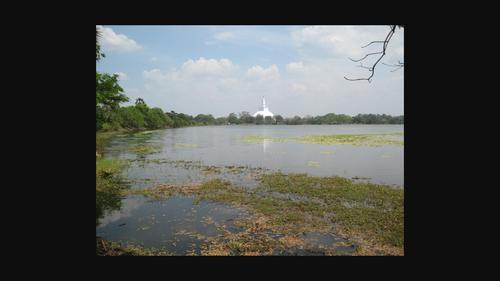Domestication of water: Management of water resources in the dry zone of Sri Lanka as living cultural heritage
IF 6.8
1区 地球科学
Q1 ENVIRONMENTAL SCIENCES
引用次数: 0
Abstract
In the dry zone of Sri Lanka, human‐made reservoirs (locally called tanks or wewas) have served for the collection, storage and distribution of rainfall and runoff and provided irrigation water for the cultivation of paddy for 2400 years. This water management system is deeply inscribed in the rural communities utilizing and maintaining it. Local knowledge connected to the utilization of this system is regarded as a substantial part of the intangible cultural heritage of this unique cultural landscape. In the dry zone of Sri Lanka this system had spread from the fifth century BCE onwards from the hinterland of the ancient capital Anuradhapura throughout the entire dry zone and provides a prerequisite for paddy cultivation. From approximately the 13th century onwards, written sources give evidence, that a weakening of state bureaucracy led to a decline of the water management system. In the Colonial period, numerous reservoirs were restored and the implementation of new governance structures lead to a diminishing of water supplies and conflicts at a local level. In post‐Colonial times, since the 1950s, the system had undergone rapid changes triggered by governmental and economic developments (e.g., land use change, migration). The rich local knowledge, serves in line with a high degree of adaptation to local conditions, as a corner stone for its resilience. A future sustainable management requires the integration of local knowledge in combination with modern techniques in education, planning, and application.

水的驯化:斯里兰卡干旱地区作为活文化遗产的水资源管理
在斯里兰卡的干旱地区,人类建造的水库(当地称为水箱或wewas)用于收集、储存和分配降雨和径流,并为水稻种植提供灌溉用水,已有2400年的历史。这种水管理系统深深刻在了利用和维护它的农村社区中。与该系统的利用相关的当地知识被视为这一独特文化景观的非物质文化遗产的重要组成部分。在斯里兰卡的干旱地区,这个系统从公元前5世纪开始从古都阿努拉德普勒的腹地传播到整个干旱地区,为水稻种植提供了先决条件。大约从13世纪开始,书面资料提供了证据,表明国家官僚机构的削弱导致了水管理系统的衰落。在殖民时期,许多水库得到了修复,新的治理结构的实施导致了供水的减少和地方一级的冲突。在后殖民时代,自20世纪50年代以来,由于政府和经济发展(如土地利用变化、移民),该系统经历了快速变化。丰富的地方知识与对当地条件的高度适应是其复原力的基石。未来的可持续管理需要将当地知识与教育、规划和应用方面的现代技术相结合。
本文章由计算机程序翻译,如有差异,请以英文原文为准。
求助全文
约1分钟内获得全文
求助全文
来源期刊

Wiley Interdisciplinary Reviews: Water
Environmental Science-Ecology
CiteScore
16.60
自引率
3.70%
发文量
56
期刊介绍:
The WIREs series is truly unique, blending the best aspects of encyclopedic reference works and review journals into a dynamic online format. These remarkable resources foster a research culture that transcends disciplinary boundaries, all while upholding the utmost scientific and presentation excellence. However, they go beyond traditional publications and are, in essence, ever-evolving databases of the latest cutting-edge reviews.
 求助内容:
求助内容: 应助结果提醒方式:
应助结果提醒方式:


